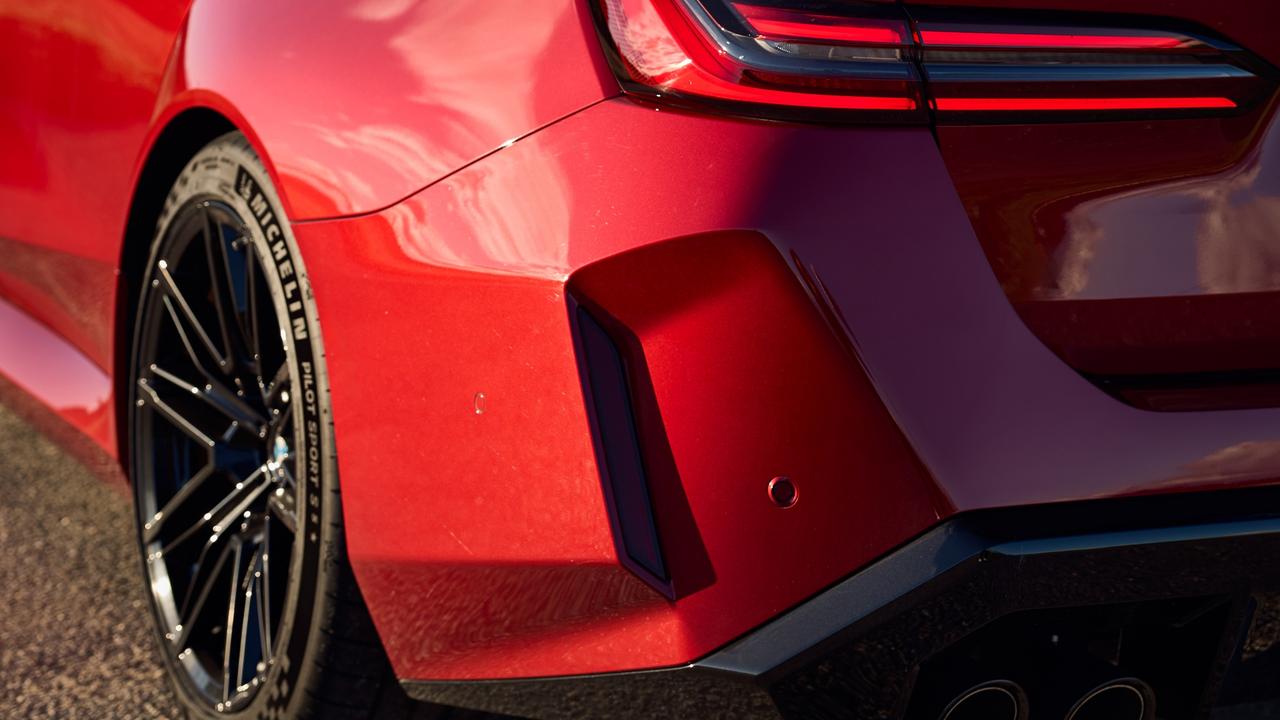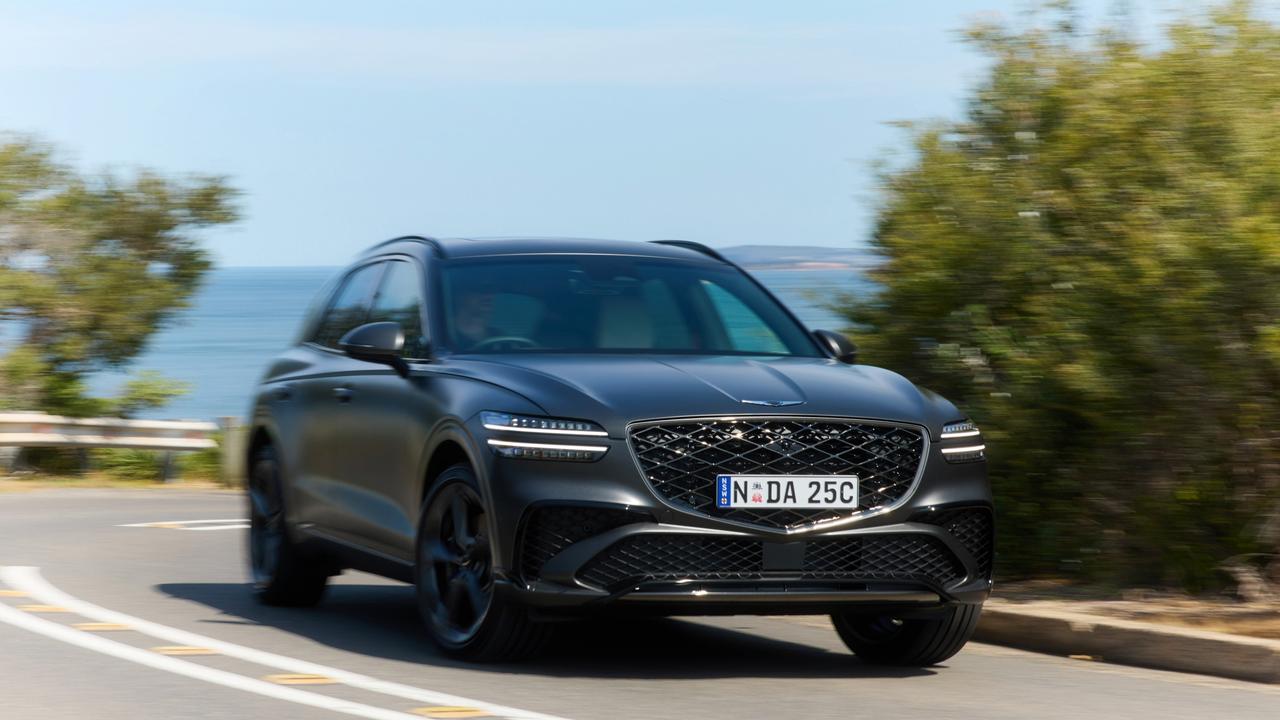Hyundai Palisade vs Mazda CX-9: Big luxury SUVs compared
If you look past the badge, these two giant SUVs have the looks and the quality to match it with the best German machines.
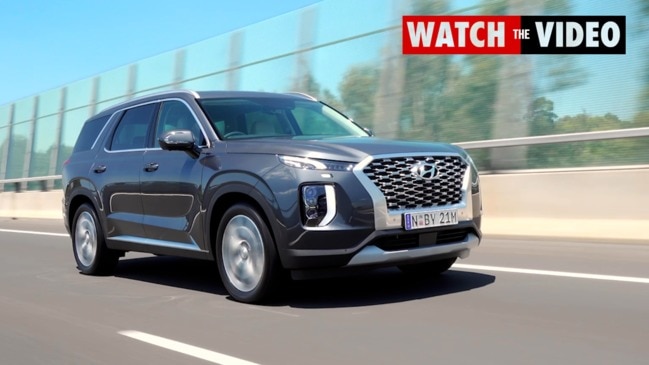
Luxury
Don't miss out on the headlines from Luxury. Followed categories will be added to My News.
There are two ways of looking at the top-grade Mazda CX-9 and Hyundai Palisade.
The first is to baulk at their asking prices — $80,000 is a lot of cash for a Hyundai or Mazda. But if you weigh the dollars against what you get — spacious SUVs loaded with equipment you won’t find in premium alternatives with six-figure price tags — they make a lot of sense.
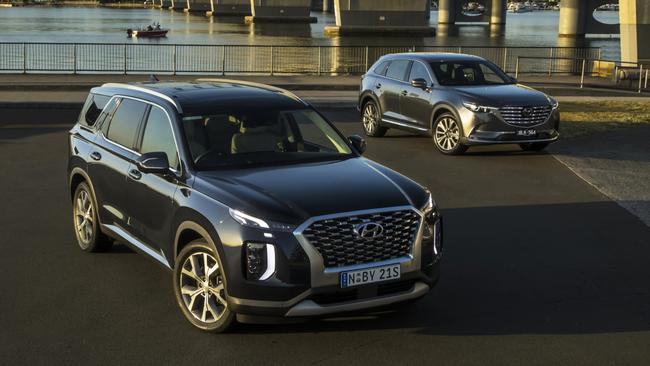
MAZDA CX-9 AZAMI LE
The CX-9 is a familiar sight on Australian roads, launching locally in 2007 before the current shape arrived in 2016.
This year’s tweaks include the introduction of a range-topping Azami LE intended to push the brand into new territory.
Priced from $73,875 plus on-road costs (about $77,000 drive-away), the range-topping model costs a whopping $31,000 more than the entry-level CX-9.
Powered by the same 2.5-litre four-cylinder turbo engine as every model in the range, the Azami needs 9.0L/100km of unleaded to make 170kW and 420Nm. All-wheel-drive is standard in Mazda’s flagship, as is a six-speed auto.
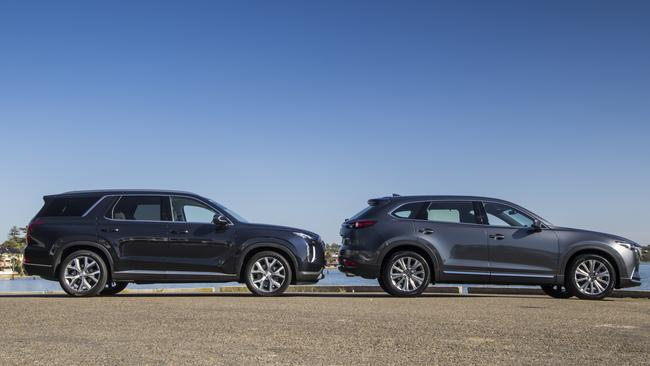
Premium CX-9 variants are loaded with equipment including a 10.25-inch infotainment screen with satnav, smartphone mirroring and a 12-speaker Bose stereo. An impressive safety suite includes active cruise control, auto emergency braking, blind-spot monitoring and rear cross-traffic alert systems.
The Azami grade adds niceties such as adaptive LED headlights and soft-touch leather seats with heating and cooling up front. The top-end Azami LE ups the ante with a pair of “captain’s chairs” replacing a conventional three-seat bench for the second row.

Though the six-seat layout accommodates one less person, remaining folk are spoiled with electric tilt-and-slide adjustment, climate control, heated and cooled seats and a central storage cubby with cup holders and USB charging points.
It’s an impressive space with comfortable seats, plenty of room and a sense of occasion. Downsides include a lack of toe room for the third row, and a glacially slow seat folding action requiring a good deal of patience from third-row passengers.
Up front, premium materials and solid ergonomics work in the Mazda’s favour, though the non-touchscreen central display can be a bit fiddly, and the cabin is starting to feel its age.
The Mazda has a slightly sportier suspension tune than the Palisade.
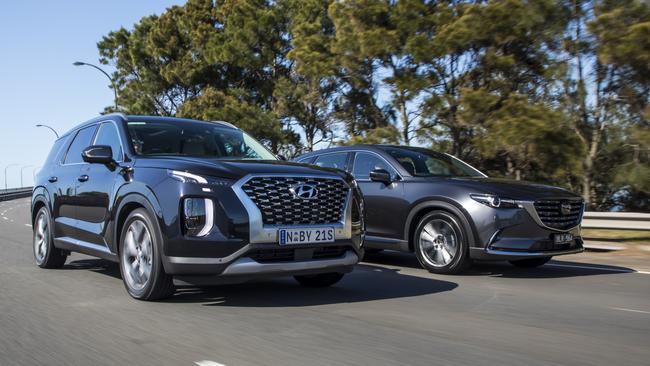
There’s less body roll in the CX-9, which also has a busier ride that can feel a touch fidgety on bumpy roads. The CX-9’s petrol engine is a little more vocal than the Palisade, though impressive noise suppression makes it quieter at highway cruising speeds.
HYUNDAI PALISADE HIGHLANDER
While the CX-9 is a known entity, Hyundai’s Palisade is a new name in Australia.
Popular in the US, the Palisade is a bigger brother to the Santa Fe seven-seater.
Space is the selling point. It comes as standard with eight seats, or you can take a similar approach to the top-grade Mazda with a pair of decadent chairs in the middle limiting accommodation to seven people — two in the front, two in the middle and three across the rear end.
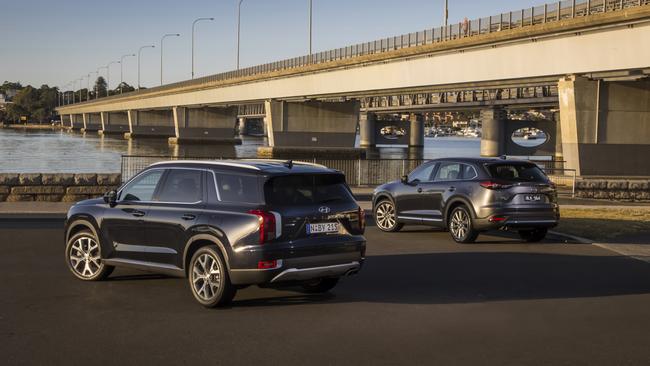
The entry-level Palisade costs about $65,000 drive-away, powering the front wheels with a petrol V6 engine. It’s comfortable without pushing boundaries for the brand.
We tested the full-strength Palisade Highlander priced from about $81,500 drive-away with a diesel engine and all-wheel-drive. The 2.2-litre unit uses 7.3L/100km to make 147kW and 440Nm, helped by a smart eight-speed auto with a wide spread of ratios.
As with the Mazda, it has heated and cooled quilted leather seats in the first two rows. You get multi-zone climate control, USB points for every passenger, and some 16 cup holders spread throughout the cabin.
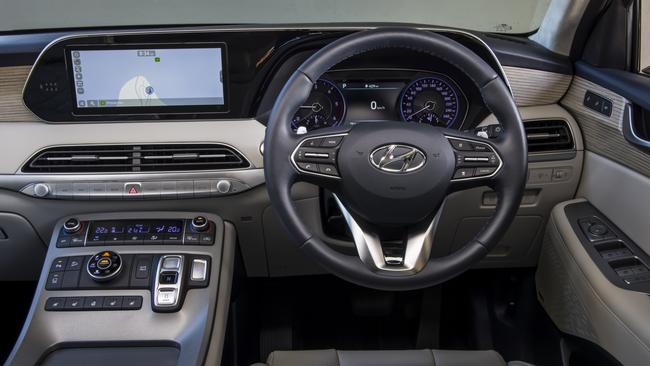
The Palisade wins points with a full-length sunroof (Mazda’s only covers the front) and better access to air vents. It’s also roomier in the rear, and benefits from a boot space advantage.
We preferred Hyundai’s BMW-like cabin styling and easy-to-use touchscreen on the road. Its one-touch mechanically folding seats flip out of the way much faster than the Mazda’s electric chairs to offer rapid back-seat access.
Hyundai’s 12-speaker stereo is a match for the Mazda’s, and it brings clever tech such as wireless smartphone charging and exit assistance preventing kids from opening doors into the path of traffic.
Softer on the road, the Palisade brings a plush ride and relaxed body movement that should please passengers. We particularly liked the meaty feel of its steering and brakes that inspired confidence on a country test loop.
VERDICT
Mazda’s top-end CX-9 is an impressive machine that shows what the brand is capable of. But the bigger Hyundai does a more convincing job as a cut-price alternative to $150,000 luxury SUVs, blending space with real-world grace.
HYUNDAI PALISADE HIGHLANDER VITALS
Price: About $81,500 drive-away
Warranty/servicing: 5-year/unlimited km, $3203 for 5 years
Engine: 2.2-litre 4-cyl turbo diesel, 147kW/440Nm
Safety: Not yet rated, 9 airbags, auto emergency braking, active cruise, lane departure and blind-spot warning, rear cross-traffic alert
Thirst: 7.3L/100km
Spare: Full size
Cargo: 311 litres (7 seat mode)
MAZDA CX-9 AZAMI LE VITALS
Price: About $77,000 drive-away
Warranty/servicing: 5-year/unlimited km, $1905 for 5 years
Engine: 2.5-litre 4-cyl turbo petrol, 170kW/420Nm
Safety: 5 stars, 6 airbags, auto emergency braking, active cruise, lane departure and blind-spot warning, rear cross-traffic alert
Thirst: 9.0L/100km
Spare: Temporary
Cargo: 230 litres (7 seat mode)
Originally published as Hyundai Palisade vs Mazda CX-9: Big luxury SUVs compared



